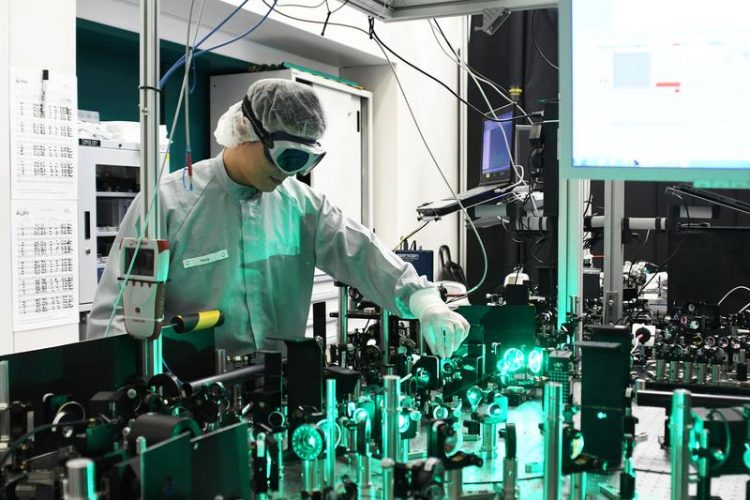Sensitive detection of molecules

Versuchsaufbau im Labor MPQ / Thorsten Naeser
To observe molecules, one has to use sensitive tools. Such measurements would be important for determining the concentration of minute particles in blood samples or during neuronal information transfer in the brain.
A team of Max Planck scientists has taken a decisive step in this direction – they recently published their results in the journal Science Advances.
Hanieh Fattahi is a research group leader at the Max Planck Institute for the Science of Light. In a research project with her team from the Max Planck Institute of Quantum Optics in Garching, Germany, she has succeeded to develop a sensitive instrument to measure concentration of molecules.
When near-infrared light interacts with molecules, it causes them to vibrate. The vibrating molecules emit coherent light at highly characteristic wavelengths. The new technology uses femtosecond pulses (an inconceivably short time unit of 10⁻¹⁵ seconds) to detect these emitted wavelengths by molecules.
Molecular vibrations in the femtosecond range
As a first demonstration, the researchers used their laser source to study water molecules. “For the first time, we were able to detect the complex electric field of light absorbed by water molecules in the near infrared spectral range,” Fattahi says.
Based on these results, Hanieh Fattahi expects to use the developed laser architecture to perform spectroscopic analyses of molecular vibrations in the femtosecond range and how to apply this technique to imaging.
Dr. Hanieh Fattahi, hanieh.fattahi@mpl.mpg.de
Media Contact
More Information:
http://www.mpl.mpg.deAll latest news from the category: Physics and Astronomy
This area deals with the fundamental laws and building blocks of nature and how they interact, the properties and the behavior of matter, and research into space and time and their structures.
innovations-report provides in-depth reports and articles on subjects such as astrophysics, laser technologies, nuclear, quantum, particle and solid-state physics, nanotechnologies, planetary research and findings (Mars, Venus) and developments related to the Hubble Telescope.
Newest articles

Sea slugs inspire highly stretchable biomedical sensor
USC Viterbi School of Engineering researcher Hangbo Zhao presents findings on highly stretchable and customizable microneedles for application in fields including neuroscience, tissue engineering, and wearable bioelectronics. The revolution in…

Twisting and binding matter waves with photons in a cavity
Precisely measuring the energy states of individual atoms has been a historical challenge for physicists due to atomic recoil. When an atom interacts with a photon, the atom “recoils” in…

Nanotubes, nanoparticles, and antibodies detect tiny amounts of fentanyl
New sensor is six orders of magnitude more sensitive than the next best thing. A research team at Pitt led by Alexander Star, a chemistry professor in the Kenneth P. Dietrich…





















